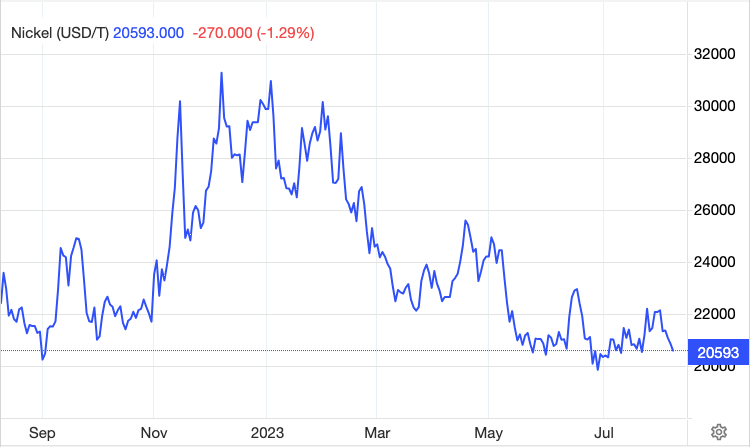Nickel Overview
uses
Nickel is primarily used to produce Stainless Steel as well as added to Electric Vehicle batteries in order to increase the range. Automotive companies such as Tesla currently uses Nickel in it’s long range and high end vehicles.
EV Demand
Nickel is a key component of most Lithium-Ion batteries and a necessary component for the majority of EV batteries. A trend towards increasing energy density has been pushing the nickel content up in the cell in order to increase energy density and reduce production costs.
Market Overview
The majority of the world’s nickel is used in the stainless-steel industry, however that balance is expected to shift rapidly in the coming decades. Looking forward 10 to 15 years, the battery sector is expected to provide more than 50% of the demand for nickel units.2
Currently, the U.S. sources much of its battery-grade nickel from Canada, Norway, Australia and Finland. But production capacity is not growing at nearly the same rate as demand forecasts. Amidst the surge in nickel prices, Tesla has already raised the price of its Model 3 and Model Y. Many in the EV industry see developing new nickel sulfide mines domestically and in allied countries like Canada as a key goal.3
In 2021, Tesla outlined plans to produce EV batteries that contain no cobalt and more nickel in order to increase energy density and lower production costs.4
, Producers’ efforts to reduce the cost of EV batteries have underpinned the move toward batteries with more nickel and less cobalt, offering real evidence of the place nickel has as a strategic battery metal going forward.
Currently, the U.S. sources much of its battery-grade nickel from Canada, Norway, Australia and Finland. But production capacity is not growing at nearly the same rate as demand forecasts. Amidst the surge in nickel prices, Tesla has already raised the price of its Model 3 and Model Y. Many in the EV industry see developing new nickel sulfide mines domestically and in allied countries like Canada as a key goal.3
In 2021, Tesla outlined plans to produce EV batteries that contain no cobalt and more nickel in order to increase energy density and lower production costs.4
, Producers’ efforts to reduce the cost of EV batteries have underpinned the move toward batteries with more nickel and less cobalt, offering real evidence of the place nickel has as a strategic battery metal going forward.


